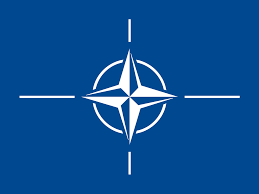
The character of modern warfare is being reshaped by the proliferation of low-cost, highly effective Unmanned Aerial Systems (UAS). Recent conflicts have demonstrated that even technologically advanced forces can be vulnerable to attacks from single drones or, more alarmingly, coordinated swarms. This evolving threat landscape has rendered traditional, static air defense systems increasingly inadequate. The strategic imperative is now shifting towards developing and deploying dynamic, mobile counter-UAS (C-UAS) architectures capable of protecting forces on the move and adapting to a fluid battlefield.
A mobile C-UAS architecture represents a system-of-systems approach, integrating sensors, command and control (C2), and various effectors onto maneuverable platforms. Unlike fixed-site defenses protecting high-value assets like airbases or command centers, a mobile solution provides a protective bubble for maneuvering ground forces, convoys, and forward-operating bases. This capability addresses a critical vulnerability, as static defenses can be identified, targeted, and bypassed, leaving deployed units exposed. The challenge is no longer simply to shoot down a drone, but to defeat a thinking, networked swarm designed to saturate and overwhelm defenses through sheer numbers and coordinated tactics.
The Evolving Threat: From Lone Predators to Coordinated Packs
The history of UAS warfare has seen a rapid evolution from large, high-altitude, long-endurance platforms like the MQ-1 Predator to the current era of small, attritable, and often commercially derived drones. The initial C-UAS challenge focused on detecting and neutralizing these larger, more conventional targets. However, the democratization of drone technology has led to its weaponization by state and non-state actors alike, creating a complex, multi-layered threat. The most significant development is the operationalization of drone swarms—groups of interconnected UAS operating collaboratively to achieve a single objective.
A swarm’s strength lies in its ability to present multiple, simultaneous threats that can overwhelm a defender’s decision-making cycle and exhaust its limited supply of high-cost interceptors. This creates a severe cost-imbalance, where a multi-million-dollar missile might be used to destroy a drone costing only a few thousand dollars. A swarm can use sophisticated tactics, such as sacrificing some drones to map out air defense locations, allowing subsequent waves to attack identified vulnerabilities. This forces a paradigm shift in defensive thinking, away from single-point intercepts and towards area denial and multi-target engagement capabilities.
The Mobile Architecture: A Layered Defense on the Move
A robust mobile C-UAS architecture is built on a layered, multi-faceted approach that encompasses detection, tracking, identification, and neutralization. The foundation of this architecture is a suite of integrated sensors mounted on tactical vehicles. This typically includes compact Active Electronically Scanned Array (AESA) radars for initial detection and tracking, Electro-Optical/Infrared (EO/IR) cameras for visual identification, and Radio Frequency (RF) sensors to detect the command links and telemetry of enemy drones.
Sensor fusion is the critical enabler, where data from these disparate sources is fed into a central C2 system. This system, increasingly powered by artificial intelligence and machine learning algorithms, must rapidly build a coherent operational picture, distinguish between friendly and hostile drones, prioritize the most immediate threats within a swarm, and assign the most appropriate effector for each target. The speed of a swarm attack means that human-in-the-loop decision-making must be augmented by automated processes to ensure timely and effective engagement.
The Kill Chain: Kinetic and Non-Kinetic Effectors
Once a threat is identified and prioritized, a mobile C-UAS system must employ a range of effectors to provide a flexible response. No single solution is effective against all types of UAS threats. A truly resilient architecture integrates both kinetic and non-kinetic options. Kinetic effectors include advanced cannon systems firing programmable airburst munitions, which create a shrapnel cloud to engage multiple drones, and small, guided missiles designed specifically for the C-UAS role. These provide a hard-kill capability essential for neutralizing imminent physical threats.
Complementing these are non-kinetic systems, which offer a deeper magazine and are often more cost-effective per engagement. High-Energy Lasers (HEL) can deliver precise, speed-of-light kills but can be limited by atmospheric conditions and power requirements. High-Power Microwave (HPM) systems can disrupt or destroy the electronics of multiple drones in a wide beam, making them ideal against swarms. Finally, RF jammers can sever the communication link between the drones and their operators, effectively neutralizing them without physical destruction. The optimal mobile platform will likely feature a combination of these effectors, allowing the commander to choose the best tool for a specific scenario.
Future Scenarios and Integration Challenges
The development of mobile C-UAS architectures is a critical step, but it is not the final destination. The future lies in networking these mobile systems into a broader, theater-wide integrated air and missile defense network. This would allow a convoy’s C-UAS platform to share tracking data with an airborne asset or a naval vessel, creating a truly unified and resilient defense posture. However, significant challenges remain. Integrating these complex systems onto vehicles with strict Size, Weight, and Power (SWaP) constraints is a major engineering hurdle.
Furthermore, the electronic warfare environment will become increasingly contested. As C-UAS systems rely on the electromagnetic spectrum for detection and engagement, adversaries will develop sophisticated jamming and spoofing techniques to counter them. This sets the stage for a continuous technological race. Militaries must therefore invest not only in the hardware but also in the agile procurement and software-defined systems that will allow them to adapt more quickly than their adversaries. The ability to defend against drone swarms on the move will be a defining characteristic of successful ground forces in the conflicts of tomorrow.
Source


